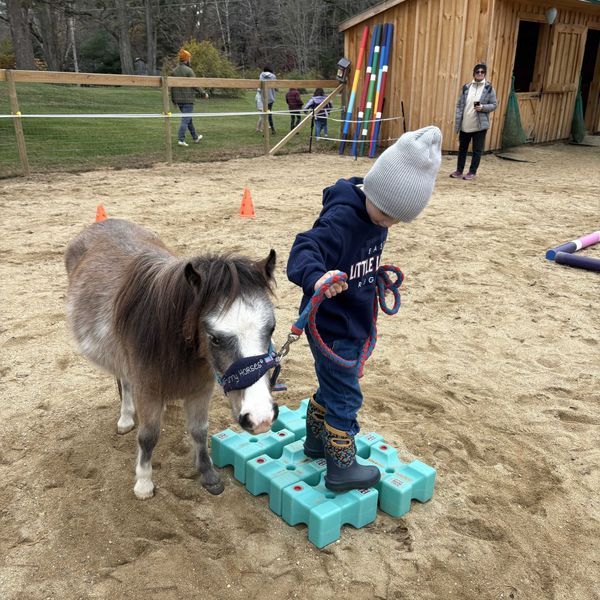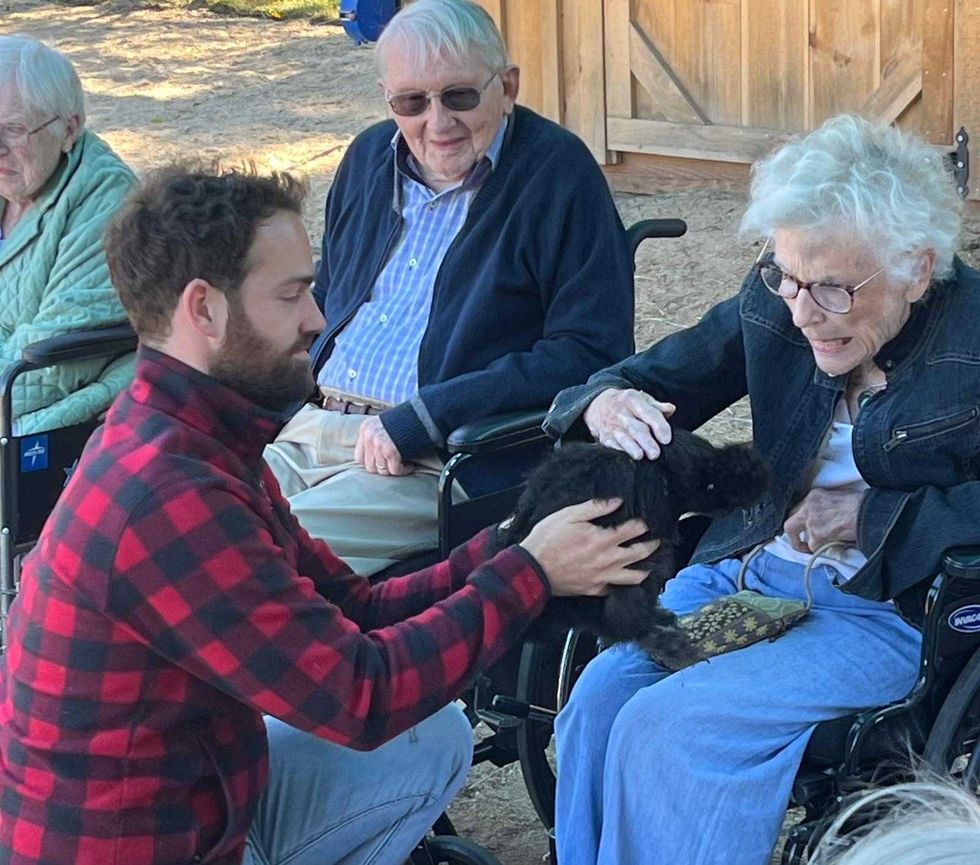A fisherman’s journal amid a pandemic

A stocked brown trout from the Blackberry River in North Canaan, Conn. The state has stocked the stream several times in recent months.
Photo by Patrick L. Sullivan

The gist of fishing right now is: There are three brook trout streams in nearby Conneciticut, the Blackberry and the Furnace Brook in North Canaan and the Housatonic, all within 20 miles of Lakeville (staying in-state).
I can avoid other people quite easily on any of these bodies of water. I’ve been doing it for decades, never mind pandemics.
The Farmington is only 20-odd miles away but it’s just far enough that if anything should happen, such as spraining an ankle or the car breaking down, I would have to holler for help and thus risk exposure and/or exposing someone else. It’s also crowded, perhaps more so than usual.
So no. Staying put means fishing nearby.
I’ve been keeping a pandemic fishing journal. Here are some recent entries:
Last bit of April to May 2: Rain. Endless rain. Had a decent Blackberry day in there, and a decent Secret Stream day, but from the evening of Thursday, April 30, into the next morning, May 1, it rained hard. (Which was good because I was worried about the crops.)
The Housatonic was up well over 3,000 cubic feet per second, and the tributaries were pretty much blown out. Managed one little brookie in the raging torrent at the falls on Mount Riga before calling it quits and trudging home to watch (i.e. nap through) the “Ancient Aliens” marathon on television.
May 5: Spring arrived for a couple of days but everything, I mean everything, was too high to fish. Yesterday the Blackberry was still a tad high but clear. My buddy Dave was there experimenting with Euronymphing and catching some fish. I managed several with a shorter rod and a Tenkara rod. One streambred 17-inch rainbow was in the mix of stockers.
May 6: Cold and awful and I was nailing fish right and left on the Blackberry downstream of the old iron furnace — including three hefty rainbows who got the “compassionate release” treatment, meaning I couldn’t seal the deal with the Tenkara rod (a cheapie called Galaxy Ray). That’s what you get for fishing heavy flies downstream with a rod that has no reel.
May 8: Chilly and very slow. Explored the Whiting River in North Canaan, nothing doing; ditto the upper stretch of the Blackberry, where you have to walk around a corn field to get at the stream.
There are two deep chutes next to some riprap where I have plucked some nice fish in previous years but nothing today. Went back to “old familiar” and hiked up a very pretty stocked brookie and a couple of rainbows, out of the pool right below the furnace dam. One of them had the sporting attitude and jumped a couple times. All this with a Dragontail zoom rod, which has become my go-to for fixed-line fishing.
May 9: Woke up to a dusting of snow. Apocalyptic thoughts ensued.
May 10: Cold, windy, intermittent sun and the dulcet tone of a chainsaw and leaf blower ringing in my ears. Caught one Basic Blackberry Bow, tickled a brown, and gave it up after a couple hours.
I am thoroughly sick of the Blackberry.
May 17: Yesterday I took the first serious 2020 foray into the Wachocastinook (aka Riga) Brook, a Class I wild trout stream in Salisbury.
By “serious” I mean clambering in there to the point you either have to keep going upstream until you hit a) an old logging road or b) continue upstream to the falls in order to get out of there.
Or you get to the Point of No Return and, well, return.
I started about 10 a.m. and fished mostly unsuccessfully until about noon, when the switch was flipped and they started hitting things: Deer Hair Sedge and the more traditional and bulkier Elk Hair caddis dries; assorted soft-hackle wets, traditional and kebari; smallish but heavy nymphs, particularly a size 16 Rainbow Warrior.
As per usual the fish were small, nothing topping 8 inches. All wild browns and brookies.
Unhappily the Canon point-and-shoot camera decided to die again. It got dunked earlier this spring and I gave it the bag of rice treatment, and for a while it worked. But it has apparently relapsed and sits, mute and unblinking, on the kitchen counter, awaiting disposal.
“Once Upon a Time in America” features ten portraits by artist Katro Storm.
The Kearcher-Monsell Gallery at Housatonic Valley Regional High School in Falls Village is once again host to a wonderful student-curated exhibition. “Once Upon a Time in America,” ten portraits by New Haven artist Katro Storm, opened on Nov. 20 and will run through the end of the year.
“This is our first show of the year,” said senior student Alex Wilbur, the current head intern who oversees the student-run gallery. “I inherited the position last year from Elinor Wolgemuth. It’s been really amazing to take charge and see this through.”
Part of what became a capstone project for Wolgemuth, she left behind a comprehensive guide to help future student interns manage the gallery effectively. “Everything from who we should contact, the steps to take for everything, our donors,” Wilbur said. “It’s really extensive and it’s been a huge help.”
Art teacher Lilly Rand Barnett first met Storm a few years ago through his ICEHOUSE Project Space exhibition in Sharon, “Will It Grow in Sharon?” in which he planted cotton and tobacco as part of an exploration of ancestral heritage.
“And the plants did grow,” said Barnett. She asked Storm if her students could use them, and the resulting work became a project for that year’s Troutbeck Symposium, the annual student-led event in Amenia that uncovers little-known or under-told histories of marginalized communities, particularly BIPOC histories.
Last spring, Rand emailed to ask if Storm would consider a solo show at HVRHS. He agreed.
And just a few weeks ago, he arrived — paints, brushes and canvases in tow.
“When Katro came to start hanging everything, he took up a mini art residency in Ms. Rand’s room,” Wilbur said. “All her students were able to see his process and talk to him. It was great working with him.”
Perhaps more unexpected was his openness. “He really trusted us as curators and visionaries,” Wilbur said. “He said, ‘Do with it what you will.’”

Storm’s artistic training began at New Haven’s Educational Center for the Arts. His talent earned him a full scholarship to the Arts Institute of Boston, then Boston’s Museum School, where he painted seven oversized portraits of influential Black figures — in seven days — for his final project. Those works became the backbone of his early exhibitions, including at Howard University’s National Council for the Arts.
Storm has created several community murals like the 2009 READ Mural featuring local heroes, and several literacy and wellness murals at the Stetson Branch Library in New Haven. Today, he teaches and works, he said, “wherever I set up shop. Sometimes I go outside. Sometimes I’m on top of roofs. Wherever it is, I get the job done.”
His deep ties to education made a high school gallery an especially meaningful stop. “No one really knew who these people were except maybe John Lennon,” Storm said of the portraits in the show. “It’s really important for them to know James Baldwin and Shirley Chisholm. And now they do.”
The exhibition includes a wide list of subjects: James Baldwin, Shirley Chisholm, Redd Foxx, Jasper Johns, Marilyn Manson, William F. Buckley, Harold Hunter, John Lennon, as well as two deeply personal works — a portrait of Tracy Sherrod (“She’s a friend of mine… She had an interesting hairdo”) and a tribute to his late friend Nes Rivera. “Most of the time I choose my subjects because there are things I want to see,” Storm said.
Storm’s paintings, which he describes as “full frontal figuratism,” rely on drips, tonal shifts, and what feels like emerging depth. His process moves quickly. “It depends on how fast it needs to get done,” he said. “Sometimes I like to take the long way up the mountain. Instead of doing an outline, I just start coloring, blocking things off with light and dark until it starts to take shape.”
He’s currently in a black-and-white phase. “Right now, I’m inspired by black and white, the way I can really get contrast and depth.”
Work happens on multiple canvases at once. “Sometimes I’ll have five paintings going on at one time because I go through different moods, and then there’s the way the light hits,” he said. “It’s kind of like cooking. You’ve got a couple things going at once, a couple things cooking, and you just try to reach that deadline.”
For Wilbur, who has studied studio arts “ever since I was really young” and recently applied early decision to Vassar, the experience has been transformative. For Storm — an artist who built an early career painting seven portraits in seven days and has turned New York’s subway corridors into a makeshift museum — it has been another chance to merge artmaking with education, and to pass a torch to a new generation of curators.
Le Petit Ranch offers animal-assisted therapy and learning programs for children and seniors in Sheffield.
Le Petit Ranch, a nonprofit offering animal-assisted therapy and learning programs, opened in April at 147 Bears Den Road in Sheffield. Founded by Marjorie Borreda, the center provides programs for children, families and seniors using miniature horses, rescued greyhounds, guinea pigs and chickens.
Borreda, who moved to Sheffield with her husband, Mitch Moulton, and their two children to be closer to his family, has transformed her longtime love of animals into her career. She completed certifications in animal-assisted therapy and coaching in 2023, along with coursework in psychiatry, psychology, literacy and veterinary skills.
Le Petit Ranch operates out of two small structures next to the family’s home: a one-room schoolhouse for animal-assisted learning sessions and a compact stable for the three miniature horses, Mini Mac, Rocket and Miso. Other partner animals include two rescued Spanish greyhounds, Yayi and Ronya; four guinea pigs and a flock of chickens.
Borreda offers programs at the Scoville Library in Salisbury, at Salisbury Central School and surrounding towns to support those who benefit from non-traditional learning environments.
“Animal-assisted education partners with animals to support learning in math, reading, writing, language and physical education,” she said. One activity, equimotricité, has children lead miniature horses through obstacle courses to build autonomy, confidence and motor skills.

She also brings her greyhounds into schools for a “min vet clinic,” a workshop that turns lessons on dog biology and measuring skills into hands-on, movement-based learning. A separate dog-bite prevention workshop teaches children how to read canine body language and respond calmly.
Parents and teachers report strong results. More than 90% of parents observed greater empathy, reduced anxiety, increased self-confidence and improved communication and cooperation in their children, and every parent said animal-assisted education made school more enjoyable — with many calling it “the highlight of their week.”

Le Petit Ranch also serves seniors, including nursing home residents experiencing depression, social withdrawal or reduced physical activity. Weekly small-group sessions with animals can stimulate cognitive function and improve motor skills, balance and mobility.
Families can visit Le Petit Ranch for animal- assisted afterschool sessions, Frech immersion or family walks. She also offers programs for schools, libraries, community centers, churches, senior centers and nursing homes.
For more information, email info@lepetitranch.com, visit lepetitranch.com, follow @le.petit.ranch on Instagram or call 413-200-8081.